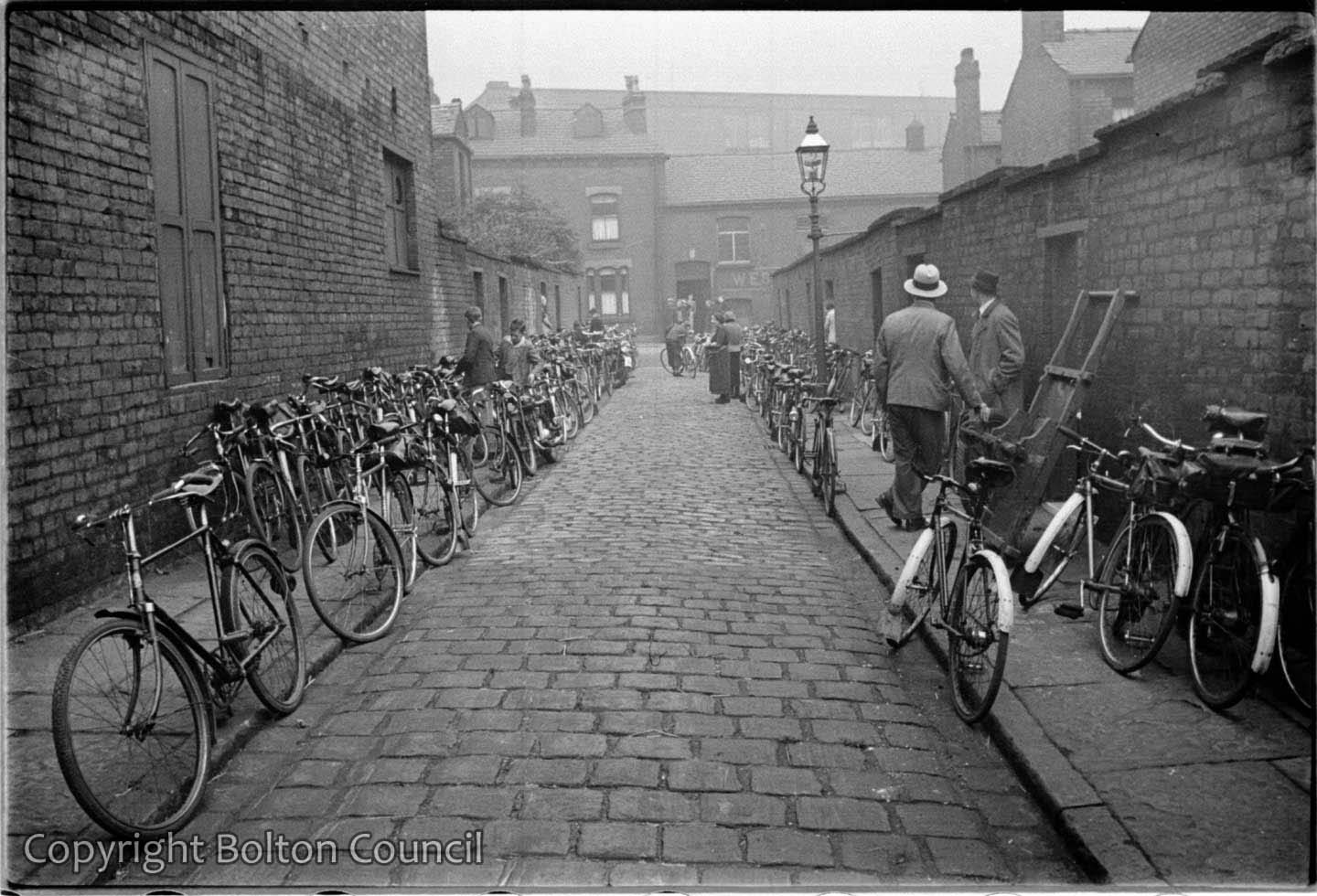 |
| From the Bolton Worktown project, a part of Mass Observation. http://boltonworktown.co.uk/ |
The Construction of Documentary
In this section Price examines documentary as first defined in the 1930s, quoting Stott from 1973 on the primacy of unassailable content, content “inaccessible to critical engagement.” (p 93) Since the camera was believed to be able to capture and reproduce reality, photographs were irrefutable proof. Price also notes in the succeeding section of this chapter that documentary photographs did not function in and of itself, but most always in support of text, to confirm what was written. Photographs were published largely anonymously.
Price covers three projects in this section, beginning with Mass Observation, an anthropological survey of British life in the 1930s, for which a number of photographers gathered images on the typical behavior of English citizens. Their brief was to remain aloof, impartial, unobserved, to gather data without interfering with their subjects. As one photographer is quoted about his approach to this work, “I was somebody from another planet.” The point was to make what seemed ordinary strange in order to be able to examine underlying assumptions and identify patterns. Unfortunately, what became of this work and of its conclusions Price does not say. He does, however, note that much documentary work of the 30’s recorded conditions with the assumption they could be ameliorated, but never challenged the political-economic structures that bred such conditions.
Of the Farm Security Administration (FSA), Price points out that while many of the projects’ photographers are now well-known for unique styles, it has been the work of editors that has shaped public perception of this body of work, which runs to a quarter million images. He also feels the project highlights some of the central contradictions in documentary: the photographs are historical, but have also been interpreted as capturing something timeless; on the one hand the images are superficially transparent, on the other densely coded; highly specific, yet universal.
He concludes by introducing The Drum, a South African illustrated weekly (founded in 1951 and somewhat outside a review of the 1930s, which is perhaps why it is presented in the book as a full-page sidebar). It seems to be cited as an example of the journalistic ethos of the period, but in high relief against the back-drop of the apartheid government, which permitted the magazine to publish investigative pieces that most clearly did not question the authority of the regime or the structure of its powers.
Documentary: New Cultures, New Spaces
Price introduces Robert Frank’s The Americans to exemplify changes in documentary beginning in the 1950s.
Frank refused a documentary project that saw life as productive of weighty events that the photographer might chronicle and analyze. He seems to be saying that none of the many scenes that happen in the world are invested with any special meaning, although some may be made distinctive by the very act of being photographed. (p103)
He sees Frank as emblematic of a trend to move toward the depiction of the everyday, citing the work in the US of William Klein and Lee Friedlander, and in the UK of Roger Mayne and Tony Ray-Jones.
By the 1970’s critical analysis had turned to semiology in the investigation of images as texts. Price cites Foucault’s reading of documentary as “‘a procedure of objectification and subjectification’ in which ordinary lives are turned into accounts.” He cites Tagg (1988) on documentary as a means of surveillance and control, as a process in which the photographer participates in making real the very systems it purports to reveal. Price sees a crisis in confidence in documentary, which could no longer be trusted to escape its own assumptions, resulting in works of contrivance or artifice. Here he introduces Eggleston, who he sees as exploiting the contrivance, in what were otherwise images of the “mundane, everyday, even trivial,” of color. “The real subject,” he believes, “was often seen to be the colour itself.” (Which in some cases seems true enough. Viewed as a body of work, color seems to be only one part of Eggleston’s interests.) Of course, it should be noted that at the time color was still largely associated with commercial work and not “serious” photography.
Today documentary work can often be found in galleries. Price ascribes this to decline in demand for the products of full-time photojournalists, as well as the photographer's loss of control over his work (now often edited on computer by a full-time photo-editor).
Price ends with a minimalist definition of documentary and a summary of how documentary images are consumed:
[Documentary is] an account of events that have their own existence outside the framework of the photograph or the confines of the studio walls. We are no longer asked to accept that such images are impartial or disinterested; instead we inhabit a space between skepticism, pleasure, and trust, from which we can read documentary images in more complex ways. (p115)
No comments:
Post a Comment